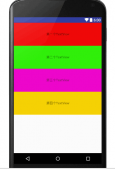
前言
今天內容主要是解決一位粉絲提的問題:在使用 Spring Security OAuth2 時如何自定義認證服務器返回異常。
那么首先我們先以 Password模式為例看看在認證時會出現哪些異常情況。
授權模式錯誤
這里我們故意將授權模式 password 修改成 password1,認證服務器返回如下所示的異常
{
"error": "unsupported_grant_type",
"error_description": "Unsupported grant type: password1"
}
密碼錯誤
在認證時故意輸錯 username 或 password 會出現如下異常錯誤:
{
"error": "invalid_grant",
"error_description": "Bad credentials"
}
客戶端錯誤
在認證時故意輸錯 client_id 或 client
{
"error": "invalid_client",
"error_description": "Bad client credentials"
}
上面的返回結
上面的返回結果很不友好,而且前端代碼也很難判斷是什么錯誤,所以我們需要對返回的錯誤進行統一的異常處理,讓其返回統一的異常格式。
問題剖析
如果只關注解決方案,可以直接跳轉到解決方案模塊!
OAuth2Exception異常處理
在Oauth2認證服務器中認證邏輯最終調用的是 TokenEndpoint#postAccessToken()方法,而一旦認證出現 OAuth2Exception異常則會被 handleException()捕獲到異常。如下圖展示的是當出現用戶密碼異常時debug截圖:

認證服務器在捕獲到 OAuth2Exception后會調用 WebResponseExceptionTranslator#translate()方法對異常進行翻譯處理。
默認的翻譯處理實現類是 DefaultWebResponseExceptionTranslator,處理完成后會調用 handleOAuth2Exception()方法將處理后的異常返回給前端,這就是我們之前看到的異常效果。
處理方法熟悉Oauth2套路的同學應該知道了如何處理此類異常,就是「自定義一個異常翻譯類讓其返回我們需要的自定義格式,然后將其注入到認證服務器中。」
但是這種處理邏輯只能解決 OAuth2Exception異常,即前言部分中的「授權模式異常」和「賬號密碼類的異常」,并不能解決我們客戶端的異常。
客戶端異常處理
客戶端認證的異常是發生在過濾器 ClientCredentialsTokenEndpointFilter上,其中有后置添加失敗處理方法,最后把異常交給 OAuth2AuthenticationEntryPoint這個所謂認證入口處理。執行順序如下所示:

然后跳轉到父類的 AbstractOAuth2SecurityExceptionHandler#doHandle()進行處理:

最終由 DefaultOAuth2ExceptionRenderer#handleHttpEntityResponse()方法將異常輸出給客戶端

處理方法
通過上面的分析我們得知客戶端的認證失敗異常是過濾器 ClientCredentialsTokenEndpointFilter轉交給 OAuth2AuthenticationEntryPoint得到響應結果的,既然這樣我們就可以重寫 ClientCredentialsTokenEndpointFilter然后使用自定義的 AuthenticationEntryPoint替換原生的 OAuth2AuthenticationEntryPoint,在自定義 AuthenticationEntryPoint處理得到我們想要的異常數據。
解決方案
為了解決上面這些異常,我們首先需要編寫不同異常的錯誤代碼:ReturnCode.java
- CLIENT_AUTHENTICATION_FAILED(1001,"客戶端認證失敗"),
- USERNAME_OR_PASSWORD_ERROR(1002,"用戶名或密碼錯誤"),
- UNSUPPORTED_GRANT_TYPE(1003, "不支持的認證模式");
OAuth2Exception異常
@Slf4j
public class CustomWebResponseExceptionTranslator implements WebResponseExceptionTranslator {
@Override
public ResponseEntity<ResultData<String>> translate(Exception e) throws Exception {
log.error("認證服務器異常",e);
ResultData<String> response = resolveException(e);
return new ResponseEntity<>(response, HttpStatus.valueOf(response.getHttpStatus()));
}
/**
* 構建返回異常
* @param e exception
* @return
*/
private ResultData<String> resolveException(Exception e) {
// 初始值 500
ReturnCode returnCode = ReturnCode.RC500;
int httpStatus = HttpStatus.UNAUTHORIZED.value();
//不支持的認證方式
if(e instanceof UnsupportedGrantTypeException){
returnCode = ReturnCode.UNSUPPORTED_GRANT_TYPE;
//用戶名或密碼異常
}else if(e instanceof InvalidGrantException){
returnCode = ReturnCode.USERNAME_OR_PASSWORD_ERROR;
}
ResultData<String> failResponse = ResultData.fail(returnCode.getCode(), returnCode.getMessage());
failResponse.setHttpStatus(httpStatus);
return failResponse;
}
}
然后在認證服務器配置類中注入自定義異常翻譯類
@Override
public void configure(AuthorizationServerEndpointsConfigurer endpoints) throws Exception {
//如果需要使用refresh_token模式則需要注入userDetailService
endpoints
.authenticationManager(this.authenticationManager)
.userDetailsService(userDetailService)
// 注入tokenGranter
.tokenGranter(tokenGranter);
//注入自定義的tokenservice,如果不使用自定義的tokenService那么就需要將tokenServce里的配置移到這里
// .tokenServices(tokenServices());
// 自定義異常轉換類
endpoints.exceptionTranslator(new CustomWebResponseExceptionTranslator());
}
客戶端異常
重寫客戶端認證過濾器,不使用默認的 OAuth2AuthenticationEntryPoint處理異常
public class CustomClientCredentialsTokenEndpointFilter extends ClientCredentialsTokenEndpointFilter {
private final AuthorizationServerSecurityConfigurer configurer;
private AuthenticationEntryPoint authenticationEntryPoint;
public CustomClientCredentialsTokenEndpointFilter(AuthorizationServerSecurityConfigurer configurer) {
this.configurer = configurer;
}
@Override
public void setAuthenticationEntryPoint(AuthenticationEntryPoint authenticationEntryPoint) {
super.setAuthenticationEntryPoint(null);
this.authenticationEntryPoint = authenticationEntryPoint;
}
@Override
protected AuthenticationManager getAuthenticationManager() {
return configurer.and().getSharedObject(AuthenticationManager.class);
}
@Override
public void afterPropertiesSet() {
setAuthenticationFailureHandler((request, response, e) -> authenticationEntryPoint.commence(request, response, e));
setAuthenticationSuccessHandler((request, response, authentication) -> {
});
}
}
在認證服務器注入異常處理邏輯,自定義異常返回結果。(代碼位于 AuthorizationServerConfig)
@Bean
public AuthenticationEntryPoint authenticationEntryPoint() {
return (request, response, e) -> {
response.setStatus(HttpStatus.UNAUTHORIZED.value());
ResultData<String> resultData = ResultData.fail(ReturnCode.CLIENT_AUTHENTICATION_FAILED.getCode(), ReturnCode.CLIENT_AUTHENTICATION_FAILED.getMessage());
WebUtils.writeJson(response,resultData);
};
}
修改認證服務器配置,注入自定義過濾器
@Override
public void configure(AuthorizationServerSecurityConfigurer security) throws Exception {
CustomClientCredentialsTokenEndpointFilter endpointFilter = new CustomClientCredentialsTokenEndpointFilter(security);
endpointFilter.afterPropertiesSet();
endpointFilter.setAuthenticationEntryPoint(authenticationEntryPoint());
security.addTokenEndpointAuthenticationFilter(endpointFilter);
security
.authenticationEntryPoint(authenticationEntryPoint())
/* .allowFormAuthenticationForClients()*/ //如果使用表單認證則需要加上
.tokenKeyAccess("permitAll()")
.checkTokenAccess("isAuthenticated()");
}
此時需要刪除 allowFormAuthenticationForClients()配置,否則自定義的過濾器不生效,至于為什么不生效大家看看源碼就知道了。
測試
授權模式錯誤

賬號密碼錯誤

客戶端錯誤

以上,希望對你有所幫助!
原文地址:https://mp.weixin.qq.com/s/JwDTdone_8DV7wlr_CWZpw















